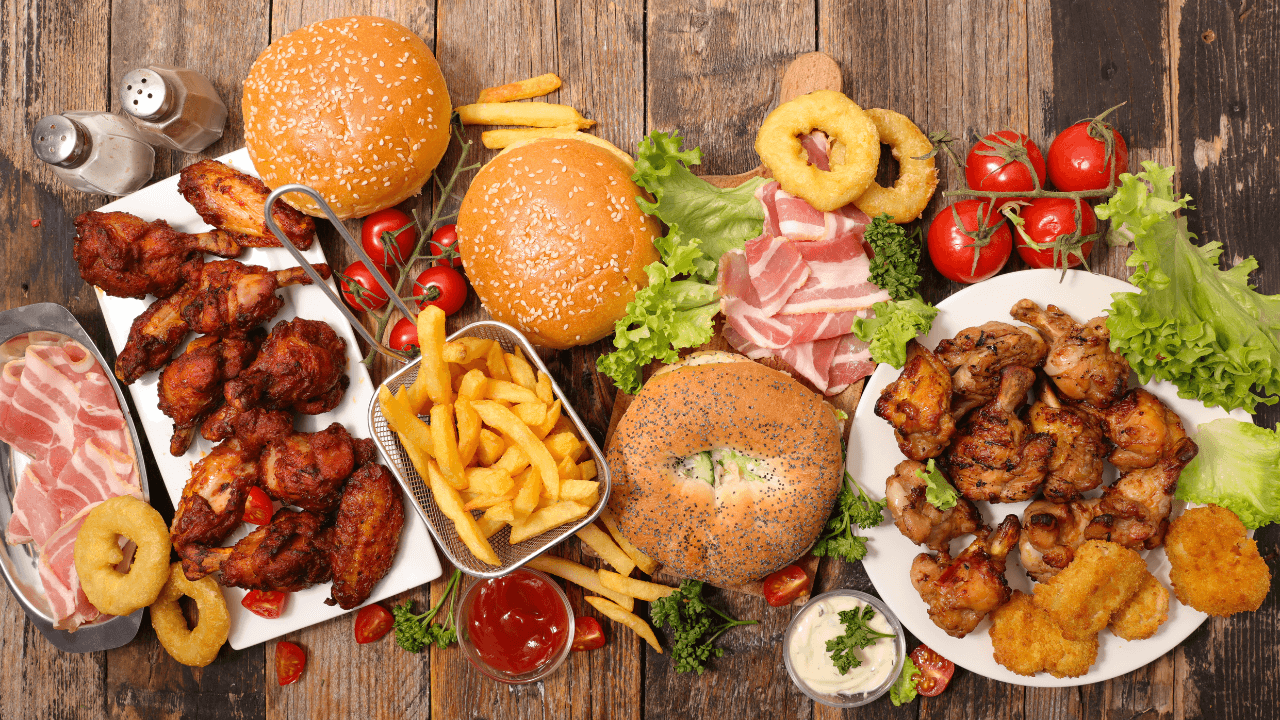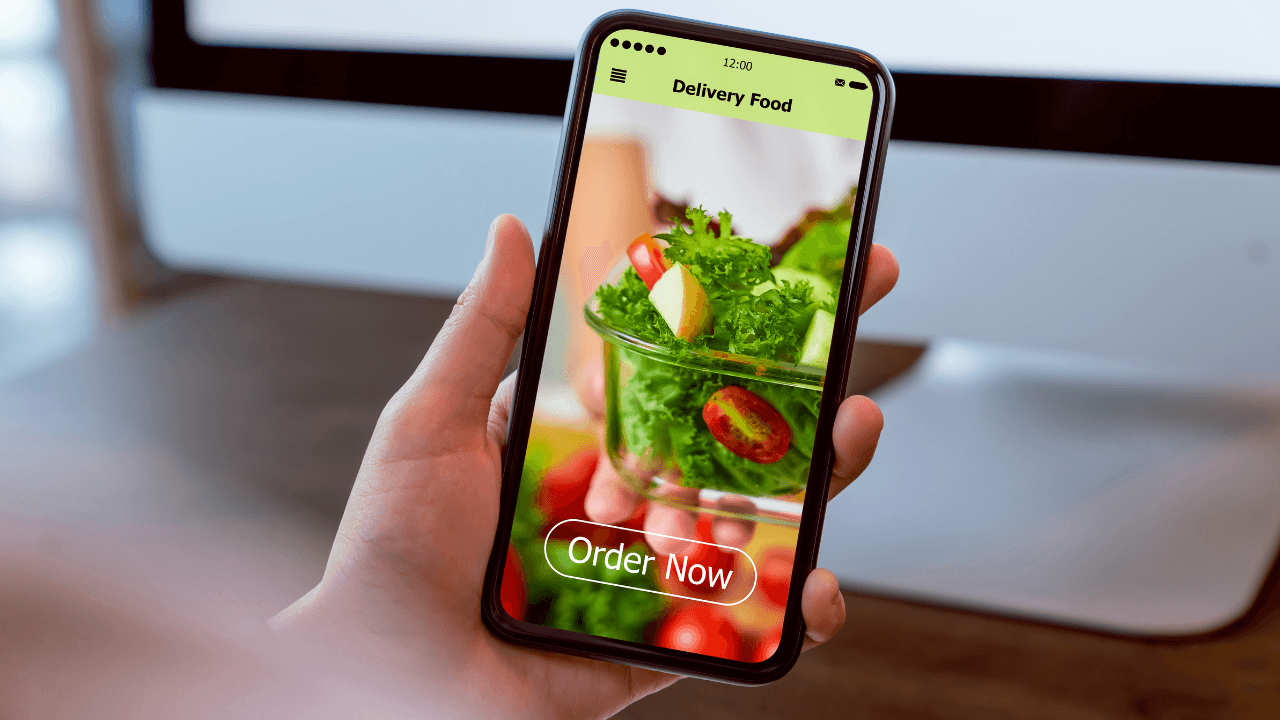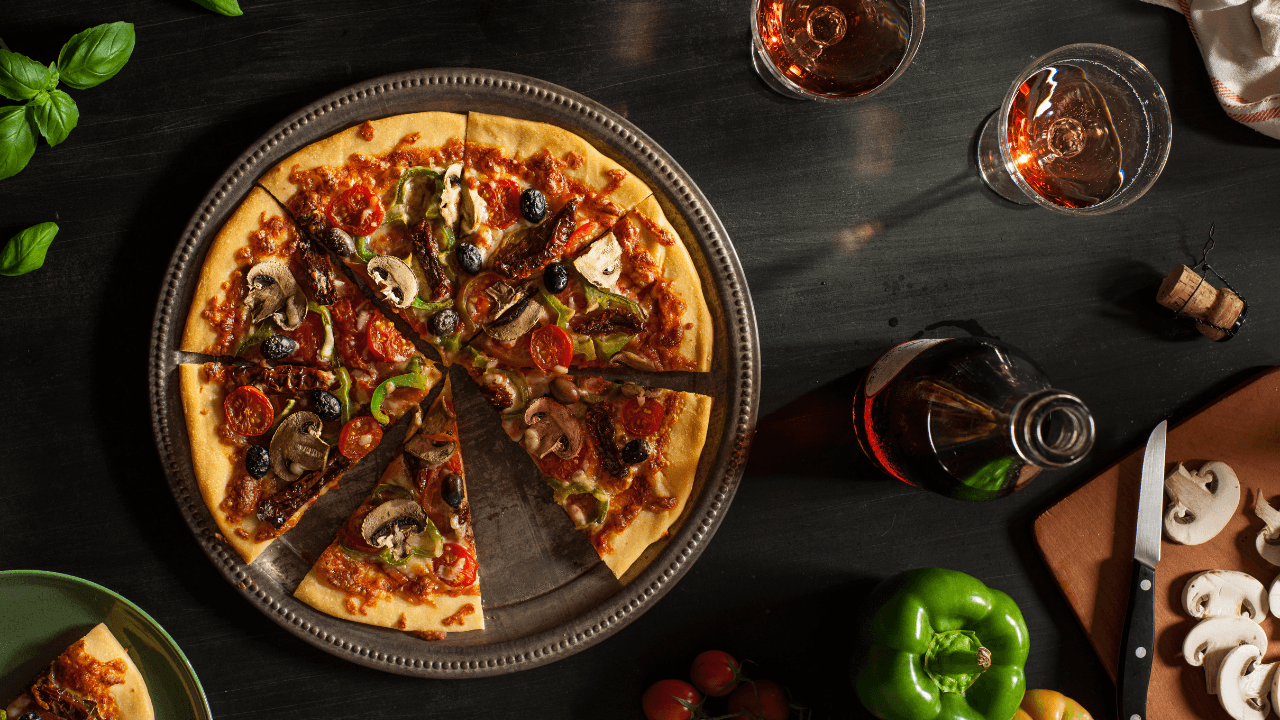- Is Opening an American Restaurant Profitable?
- Is $10,000 Enough to Open an American Restaurant?
- How to Set a Proper Budget for Your American Restaurant
- Seeking Help from Third-Party Businesses
- How Orders.co Revolutionizes American Restaurant Management
Welcome to the entrepreneurial adventure of a lifetime: opening your own American restaurant!
But before you dive headfirst into the sizzling world of burgers, fries, and apple pie, there’s one burning question on your mind:
How much money do you actually need to get started?
The food service industry is set to hit a staggering $1 trillion in sales by 2024.
But how much money do you need to start a restaurant of your dreams?
From diners’ gleaming countertops to bistros’ upscale ambiances, the range of restaurant concepts is as diverse as the nation itself.
And with each concept comes its own set of costs, challenges, and potential rewards.
As a prospective independent restaurant owner, buckle up as we crunch the numbers and uncover the secrets to launching your American eatery.
Is Opening an American Restaurant Profitable?
Let’s dive into the question on every aspiring restaurateur’s mind: Is opening an American restaurant a lucrative venture?
With the industry’s workforce projected to swell by 200,000 jobs, reaching a total employment of 15.7 million by the end of 2024, it’s clear that the restaurant business is booming.
But does this growth translate to profitability for individual establishments?
Expansive Market Potential
The American dining landscape is as vast and varied as the nation itself, offering many opportunities for savvy entrepreneurs. From cozy mom-and-pop diners to upscale fine dining establishments, there’s a niche for every palate and preference.
With a growing population and an insatiable appetite for culinary experiences, the potential for profitability in the American restaurant industry is undeniable.
Resilient Consumer Demand
Despite economic fluctuations and evolving dining trends, one thing remains constant: Americans love to dine out.
Whether it’s a quick bite on the go or a leisurely meal with family and friends, dining out is deeply ingrained in the fabric of American culture.
This consistent demand provides a solid foundation for restaurant profitability, particularly for establishments that deliver exceptional food, service, and ambiance.
Innovation and Adaptability
In an industry as dynamic as hospitality, innovation is critical to staying ahead of the curve. Successful restaurateurs embrace change, continuously evolving their menus, concepts, and dining experiences to meet their customers’ evolving tastes and preferences.
By staying agile and adaptable, American restaurants can weather market fluctuations and thrive in adversity.
Challenges Related to Operating Costs
Of course, profitability in the restaurant business comes with its fair share of challenges. High overhead costs, tight profit margins, labor costs/shortages, and regulatory hurdles are just a few obstacles that restaurateurs must navigate.
Success requires meticulous financial planning, efficient operations, and a keen understanding of your target market and competitive landscape.
Is $10,000 Enough to Open an American Restaurant?
Picture this: you have a dream, a vision, and $10,000 burning a hole in your pocket.
But as you stand on the precipice of culinary entrepreneurship, you can’t help but wonder: is it enough to turn your gastronomic aspirations into reality and open an American restaurant?
Let’s explore the intricacies of restaurant startup costs and the feasibility of launching a culinary venture with a modest budget.
- Location, Location, Location: The old adage holds true: location can make or break a restaurant. In prime urban areas with high foot traffic and skyrocketing real estate prices, $10,000 might barely scratch the surface of your startup costs. However, in smaller towns or less trendy neighborhoods, it could be enough to secure a lease on a modest space and cover initial expenses like permits, licenses, and deposits.
- Equipment and Supplies: Outfitting a restaurant with the necessary equipment and supplies is no small feat. From industrial-grade kitchen appliances to furniture, dinnerware, and cooking utensils, the costs can quickly add up. While $10,000 may cover the basics for a small-scale operation or a food truck, larger establishments will likely require a more substantial budget to acquire everything needed to run efficiently.
- Permits and Licenses: Before you can fire up the stoves and start cooking, you’ll need to navigate the bureaucratic maze of permits, licenses, and regulatory requirements. These costs can vary widely depending on your location and concept, ranging from health permits and liquor licenses to zoning approvals and fire safety inspections. Be sure to budget for these expenses accordingly to avoid any surprises down the road.
- Staffing and Training: Budgeting for hiring, training, and payroll is essential for ensuring smooth operations and delivering professional service to your customers. To keep costs low, consider hiring university students, fresh high school grads, or voluntary unemployed people. This can certainly help you get started and cover initial hiring expenses.
- Marketing and Promotion: From targeted social media campaigns to pay-per-click advertising on search engines, allocating funds for online marketing initiatives can help you reach a bigger audience and drive traffic to your restaurant’s website or social media pages.
Having $10,000 in your pocket as a start can open doors if you’re careful with your investments. However, if you want to be more resilient, head to the next part to learn how to create a robust budget plan.
How to Set a Proper Budget for Your American Restaurant
Setting a proper budget is the cornerstone of launching any business for restaurant owners. But before you crunch the numbers, it’s crucial to decide what type of American eatery you want to open.
Here are a few examples to consider:
Classic Diner
Suppose you’re drawn to the nostalgia of the American diner, complete with chrome countertops, vinyl booths, and bottomless cups of coffee.
In that case, you’ll need to budget for retro-inspired decor, comfort food classics like burgers and milkshakes, and a bustling atmosphere that’s as welcoming at 6 am as it is at midnight.
Gastropub
For those with a passion for craft beer, artisanal cocktails, and elevated comfort food, a gastropub might be the perfect fit.
Expect to allocate funds for a well-stocked bar, trendy decor, and a menu featuring gourmet twists on pub favorites like fish and chips, sliders, and charcuterie boards.
Farm-to-Table Bistro
A farm-to-table bistro could be your calling if your culinary philosophy revolves around fresh, locally sourced ingredients and seasonal flavors. Plan to invest in a kitchen equipped for scratch cooking, a cozy dining space with rustic charm, and a menu that highlights the best local farmers and producers offer.
Small Family Restaurant
A small restaurant may be the ideal choice for those interested in creating a cozy, intimate dining experience.
Budget for a warm and inviting atmosphere, home-style cooking equipment, and a menu featuring beloved family recipes and comfort foods. Additionally, consider staffing, marketing, and community engagement expenses to foster a loyal customer base.
Food Truck
A food truck can offer flexibility and a unique dining experience for those seeking a more mobile option.
You can start off with a food truck and then expand your services to operate a brick-and-mortar restaurant. Consider budgeting for vehicle customization, POS, kitchen equipment, permits, and marketing and operational costs associated with operating a mobile business.
Now that you’ve settled on a concept, it’s time to set a budget that reflects your vision, goals, and financial realities. Here’s how:
Research and Planning
Start by researching the costs of opening and operating your own restaurant in your desired location.
This includes expenses such as rent, utilities, permits, a business license, liquor license, equipment, supplies, and staffing. Use this information to create a detailed budget outlining your restaurant startup costs and ongoing expenses.
Prioritize Spending
With a limited budget, it’s essential to prioritize spending on the essentials that will significantly impact your restaurant’s success. This might include investing in high-quality ingredients, hiring skilled staff, and creating a welcoming atmosphere that reflects your restaurant’s concept and brand.
Leasing a Commercial Space and Construction Costs
Factor in expenses for leasing a commercial space or constructing a new one if necessary. This might include rent, renovations, and construction materials, depending on the condition of the space and your desired aesthetic.
Account for Contingencies
No matter how carefully you plan, unexpected expenses are bound to arise. Be sure to set aside a contingency fund to cover unforeseen costs, such as equipment repairs, marketing emergencies, or fluctuations in food prices.
Marketing Costs
Allocate funds for marketing initiatives to promote your restaurant and attract customers. This might include expenses for digital marketing, social media advertising, printed materials, and promotional events.
Monitor and Adjust
Once your restaurant is up and running, regularly monitor your finances and adjust your business budget as needed. Track your revenue, expenses, and cash flow to make sure that you’re staying on track to meet your financial goals and objectives.
Seeking Help from Third-Party Businesses
Launching and running a successful American restaurant requires more than just culinary prowess; it demands a multifaceted approach encompassing marketing, technology, and operational efficiency.
Fortunately, as a restaurant owner, you have third-party businesses specializing in marketing solutions, local SEO optimization, website creation, and POS setups that can be invaluable partners in accelerating your success.
Here’s how:
Marketing Solutions
Third-party marketing firms can help you develop comprehensive marketing strategies tailored to your specific audience, whether it’s leveraging social media platforms, running targeted online advertising campaigns, or organizing promotional events.
By outsourcing your marketing efforts to experts in the field, you can maximize your restaurant’s visibility, reach your new customers, and build brand awareness in a crowded marketplace.
Local SEO Optimization
With more and more consumers turning to the internet to discover local businesses, optimizing your restaurant’s online presence for local search is crucial.
Third-party SEO optimization services specialize in helping businesses such as yours rank higher in local search results, ensuring that hungry diners can easily find and patronize your establishment.
From optimizing your website and Google My Business listing to managing online reviews and citations, investing in local SEO can significantly boost your restaurant’s visibility and get more customers through organic search.
Website Creations
Your restaurant’s website serves as its digital storefront, giving potential customers essential information about your menu, hours, location, and contact details.
A well-designed and user-friendly site can improve your restaurant’s credibility, attract more online reservations and takeout orders, and provide a seamless browsing experience for visitors.
Third-party website creation services specialize in designing and developing professional websites tailored to restaurants’ unique needs. They ensure that your online presence reflects the quality and ambiance of your dining establishment.
Smooth POS Setups
A reliable and efficient point-of-sale (POS) system is essential for streamlining transactions, managing online orders, and tracking sales in your restaurant.
Third-party POS setup services can help you select and implement the right POS system for your business, whether a traditional POS terminal, a mobile POS solution, or an integrated restaurant management platform.
By partnering with experts in POS technology, you can make sure that your restaurant operates smoothly and efficiently, minimizing wait times, reducing errors, and giving a superior dining experience for your customers.
How Orders.co Revolutionizes American Restaurant Management
When analyzing your costs for opening an American restaurant, remember to take into account your POS and orders management.
That’s when investing in a single platform like Orders.co for managing both delivery and dine-in orders can prove to be a lucrative decision in the long run.
By consolidating all order management tasks into one platform, you streamline operations and reduce costs associated with maintaining multiple systems or apps.
This upfront investment can lead to significant savings over time as you avoid the expenses of licensing fees, subscription costs, and training for separate platforms.
But that’s not all, Orders.co, has comprehensive solutions designed to simplify every aspect of your venture!
With Orders.co, you will address many critical needs:
- Orders Consolidation: Manage multiple orders from different delivery apps on one device, ensuring consistency and efficiency.
- Custom Ordering Website: Establish a commission-free, customizable website for direct sales, integrating loyalty programs and AI marketing.
- Menu Management: Simplify menu updates across platforms, ensuring consistency and eliminating out-of-stock orders.
- Marketing Solutions: Utilize AI-powered emails, text messages, and loyalty programs to drive customer engagement and repeat visits.
- Local Business Optimization: Enhance visibility across listings and improve SEO, solving inconsistencies and expanding online presence.
- QR Menu Setup: Reduce costs and enhance the dine-in experience with QR menus, streamlining ordering and reducing labor.
- Guest Feedback Monitoring: Maintain a positive reputation and address issues promptly by monitoring and managing customer feedback.
- Dispute Management: Minimize financial impacts with third-party chargeback recovery services, preserving customer relationships.
Schedule a Demo With Orders.co, and confidently navigate the complexities of restaurant management!



